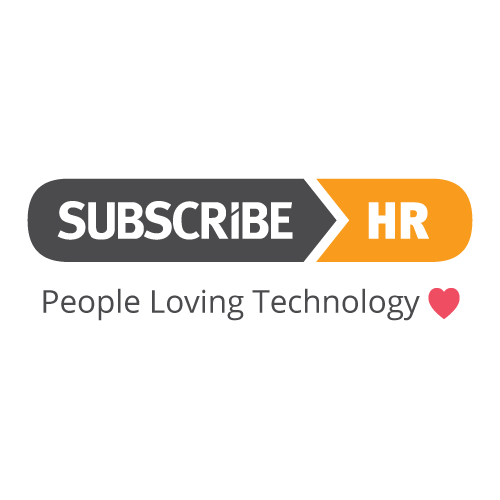
Optimise your employee lifecycle through HR automation and learning in the flow of work

Let’s get straight to the point. Optimising your employee lifecycle is all about improving your employee experience so that you improve employee engagement. Improving employee engagement results in happier and more productive employees, and this, in turn, produces happy customers, which subsequently generates more revenue. That’s a win for your customers, a win for your employees and a win for your business. In a world of increasing complexity and demands on our time, having the right systems and processes in place to enhance the employee experience is essential.
In this article, we will be exploring the critical ingredients for improving your employee experience via two under-leveraged pathways:
1. Implementing intelligent HR automation for the right tasks and processes during the employee lifecycle, and
2. Providing learning and development opportunities in the flow of work so that employees can fit it into their schedules.
Iron Mountain have conducted a significant amount of research into how automating HR processes provides a means to create the time HR needs to focus on more strategic work. Results indicate that respondents from highly automated HR departments are about twice as likely to enjoy above-average productivity and considerably more likely as those from the least automated HR departments to say they enjoyed above average HR effectiveness (38% to 25%).
Learning is the top-rated challenge among Deloitte’s 2019 Global Human Capital Trends report. People now rate the ‘opportunity to learn’ as among their top reasons for taking a job, and business leaders know that changes in technology, longevity, work practices, and business models have created a tremendous demand for continuous, lifelong development.
We’ve outlined 4 considerations below for improving your employee experience through HR automation, learning and development. The positive results available to HR professionals will flow on to benefit the organisation as a whole to enhance overall performance and long-term growth.
1. The model of the employee lifecycle
The proven model known as the employee lifecycle (ELC), is a powerful way to visualise the journey your employees take and how they interact with you. Understanding this model helps you ensure that you’re engaging them at every touchpoint they have with your organisation.
By optimising each stage of your ELC, it is possible to attract and retain a top tier talent for your business.
Here is the framework for the employee lifecycle model:
1. Attraction: Build the right brand and culture to attract the best candidates to your business.
2. Recruitment: Develop a multi-channel recruitment strategy and don't forget referrals when assessing who is the best fit for both your company and the role.
3. Onboarding: Provide an engaging employee experience is essential to the retention and the success of new team members, existing employees and the organisation.
4. Development: Foster ongoing professional development and continuous improvement across your business.
5. Retention: Develop strategies and processes to ensure you retain your top talent. A positive company culture is essential.
- Separation: All good things must come to an end. Put a process in place to learn from the experience, continue good morale within your team, and ensure that departing employees leave on good terms.
2. Leverage HR automation to enhance employee performance
Did you know that almost 70 per cent of HR work is still unstructured, relying on excel, email and calls? According to the study on The State of HR Automation in Mid-Sized Organisations, 59% of respondents said the HR professionals in their organisation spend over half their time on manual administrative tasks. Essentially that means that if you don't have the right automation in place, manual, unstructured HR tasks will result in unnecessary complexity, time wasted, and a productivity drain for both HR (and other employees).
The work required to map, assess and automate the right tasks and processes in your organisation (so as to optimise productivity and minimise complexity), can seem daunting at first. But it doesn’t need to be.
According to Willis Towers Watson’s research, once the decision has been made to adopt automation and artificial intelligence technologies, leaders have to consider the following questions about how to implement that decision:
- How, when, and where should we apply automation in our organisations?
- How do we stay on top of technological trends as work and automation continue to evolve?
Help is at hand, however. Based on decades of experience helping companies transform approaches to work and leadership, Reinventing Jobs: A 4-Step Approach for Applying Automation to Work offers a new set of tools for applying automation and artificial intelligence in today’s organisations.
Ravin Jesuthasan, Managing Director at Willis Towers Watson, and John Boudreau, Professor and Research Director at the University of Southern California’s Marshall School of Business and Centre for Effective Organisations have written Reinventing Jobs to help HR professionals, managers and business leaders tackle the challenge of intelligent automation.
To achieve the optimal combinations of humans and automation, leaders must implement the following four-step framework:
1. Deconstruct existing jobs into key tasks and categorise them.
2. Determine the payoff of each task: Estimate the relationship between the performance and strategic value of each task.
3. Identify automation options: Consider the different types of AI and robotics capable of performing each task.
4. Reinvent the job by optimally combining human and automated work: Create new jobs by determining which human tasks should be substituted, augmented, or transformed by automation.
When viewed through the above lens, human-automation collaboration feels more logical, less scary, and more like a process that can have positive benefits for workers. Ultimately, the aim of HR automation is to enable businesses to improve the employee experience and optimise the employee lifecycle resulting in increased efficiency and reduced costs. By designing, streamlining and implementing solutions that transform manual work into digital workflows HR automation can deliver significant benefits.
Consider these benefits of automation:
- Reduce unstructured work that relies on excel, email and calls.
- Reduce errors related to data entry and misplaced/lost documents.
- Mitigate compliance risk and meet regulatory requirements through digital filing and record keeping.
- Enable faster processing and easier data sharing to improve productivity.
- Make intelligent, strategic business decisions based on real-time data with actionable reporting.
- Encourage collaboration by removing silos between departments and teams.
- Improve employee engagement and reduce employee turnover.
- Identify the best use of your employee talent through HR data.
- Ensure your employees have time to focus their talents on more complex tasks like strategy and using their soft skills to do the work that matters.
3. Develop a learning culture
The Harvard Business Review reports that companies which offer comprehensive employee training programs can increase sales by up to 19 percent and profits by up to 29 percent (while also reducing employee turnover by as much as 72 percent). But that’s not the only reason why providing the right learning and development for your employees is important.
Learning and development are major enablers. Education and skills are perhaps the biggest drivers of an individual's own personal earnings potential throughout their career, so organisations that offer training, lots of developmental assignments, and a coaching culture, are now the premium places to work. As more and more robotics and artificial intelligence enter the workforce, Bersin's learning research indicates that for individuals, the 'learning curve is the earning curve.'
If you want to develop a culture of learning and development within your organisation, Britt Andreatta (PhD), an expert on developing a learning culture makes the following recommendations:
- Honour the ever-present nature of learning.
- Value learning as a path to mastery.
- Make learning easily accessible.
- Use blended learning to maximise options.
- Teach managers how to coach.
- Evaluate performance based on learning.
Andreatta says that a learning culture could positively affect organisational productivity and profit in the following ways:
- Employee engagement goes up.
- A growth mindset takes root yielding ever-higher levels of performance.
- Enhanced creativity and innovation drives individual and team success.
- Employee motivation increases.
- New technology skills are easier to obtain.
- Leadership development gains priority.
4. Build a self-developing organisation
The 'self-developing organisation’ is an organisation that has the capacity, the technology and the operational agility to develop, train and empower employees on the fly. With the rise of the need for real-time learning and empowerment on the rise, rather than think about your learning and HR strategy as one of 'delivering training,' think about it as 'building a self-developing organisation.'
Here’s a roadmap for how that might look in your organisation:
- Ensure that education and learning content is readily available to anyone, and it’s easy to find and use.
- Develops teams where people make time to teach and coach others, and they are rewarded for it.
- The company stops and investigates its mistakes, making sure teams learn from failures.
- Formal learning programs are easy to access and highly regarded, so people regularly use them.
- Leaders at all levels teach classes and workshops (professional, technical, and senior executives).
- Onboarding is a serious and formal effort, with a focus on making people productive regardless of where they come from.
- Every job has a transition management program to help people learn the job from internal transfer.
- Learning technology is modern, easy to use, and fun.
- Individuals are rewarded for self-development.
- Books, magazines and other external research are readily available.
- People are hired for their 'learning agility' and the ability to teach themselves.
- Learning is valued as part of the culture and remains in place during good times and bad.
Finding the right training solution for your organisation doesn’t need to be difficult. There are solution providers that provide the right resources for all your professional development, compliance, onboarding, performance management and business training needs. Go1’s training and development courseware provides access to more than 50,000 courses from over 100 of the world's trusted and most respected content providers.
Selecting and implementing the right HR software to automate the types of manual, repetitive and time-consuming tasks that result in unstructured work can be a challenge, but to celebrate the partnership between Go1 and Subscribe-HR, we’ve created a FREE guide to make it easier for you.
If you’re ready to discover the difference HR automation, learning & development can make to engagement and performance in your business, then this guide is for you. Discover which HR solutions you can use to automate which tasks and the courses you can share at each stage of the employee lifecycle to provide the right learning opportunities for your employees.
For more insights, subscribe to the Go1 newsletter to stay on top of all the latest L&D trends. Or, you can book a demo today to find out how Go1 can help with your team’s learning needs.




